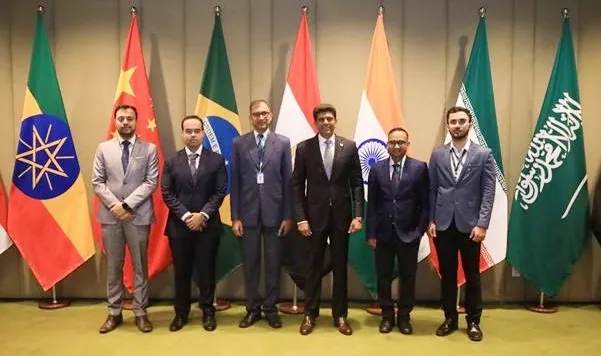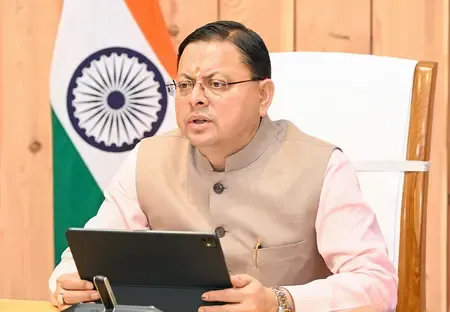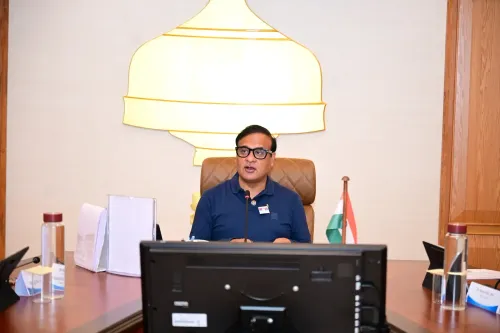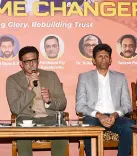How Can India Strengthen BRICS Digital Ties?

Synopsis
Key Takeaways
- India's Digital Public Infrastructure is a global model for digital governance.
- Aadhaar has provided millions with secure digital identities.
- UPI accounts for a significant portion of global digital transactions.
- BRICS nations are encouraged to collaborate for inclusive growth.
- India's ambitious Digital Bharat Nidhi program connects rural areas.
Brasilia, June 3 (NationPress) India has reiterated its dedication to inclusive, sustainable, and future-ready digital advancements during the 11th BRICS Communications Ministers’ Meeting held in Brasilia, Brazil.
Union Minister of State for Communications Pemmasani Chandra Sekhar showcased India’s Digital Public Infrastructure (DPI) as a global standard for inclusive and transformative digital governance at the BRICS ministers’ meeting.
The Minister emphasized the crucial impact of flagship initiatives like Aadhaar and the Unified Payments Interface (UPI) in enhancing universal and meaningful connectivity. He pointed out that Aadhaar has empowered over 950 million individuals with a secure digital identity, facilitating easy access to vital public and private services. UPI, he asserted, has transformed real-time digital payments and now represents 46% of global digital transactions.
He urged BRICS countries to strengthen collaboration in utilizing digital public infrastructure to foster inclusive growth and establish resilient digital economies. He stressed that India’s DPI framework—constructed on open, interoperable platforms—acts as a catalyst for financial inclusion, effective governance, and digital innovation while safeguarding against monopolistic practices.
Chandra Sekhar outlined India’s achievements across four pillars—Universal and Meaningful Connectivity, Space and Environmental Sustainability, and Digital Ecosystems—under the visionary guidance of Prime Minister Narendra Modi during the meeting in Brasilia on Monday.
BRICS comprises 11 nations: Brazil, Russia, India, China, Egypt, South Africa, the United Arab Emirates, Ethiopia, Iran, Indonesia, and Saudi Arabia.
Highlighting India’s dynamic startup landscape, robust digital skills initiatives, and progressive laws like the Telecommunications Act and the Data Protection Act, Dr. Sekhar stressed the significance of trust and user safety in today’s digital era.
He also discussed India’s Sanchar Saathi initiative—a vital effort to combat telecom fraud—and called for enhanced BRICS cooperation in cybersecurity, data protection, and digital trust to ensure the safety and integrity of interconnected digital societies.
Dr. Chandra Sekhar celebrated India’s digital evolution, marking the shift from a digital divide to digital leadership. The ambitious Digital Bharat Nidhi program was highlighted as a foundational initiative, funding key projects like BharatNet, which now connects over 218,000 village councils through optical fiber infrastructure. India’s indigenous development and widespread deployment of 4G and 5G technologies have achieved near-universal high-speed connectivity, now reaching over 95% of the population with 4G and more than 80% with 5G. The nation has also emerged as a global frontrunner in affordable digital access, boasting the lowest data rates globally—only 12 cents per gigabyte.
Previously, while endorsing the Final Declaration, Dr. Sekhar praised the collaborative spirit among BRICS nations and recognized the expanded membership’s contribution to enriching the dialogue.
The Indian minister also engaged in bilateral discussions with his Brazilian counterpart.
“Engaging bilateral discussions with Brazil to enhance digital connections for a smarter, safer future. We explored India’s advancements in indigenous 4G/5G technology, domestic manufacturing, and potential collaboration in 6G, Quantum Tech, and Satcom. Additionally, we discussed Brazil’s 6GHz trials and their satcom requirements, telecom security, and global DPI cooperation,” Chandra Sekhar shared on X.










